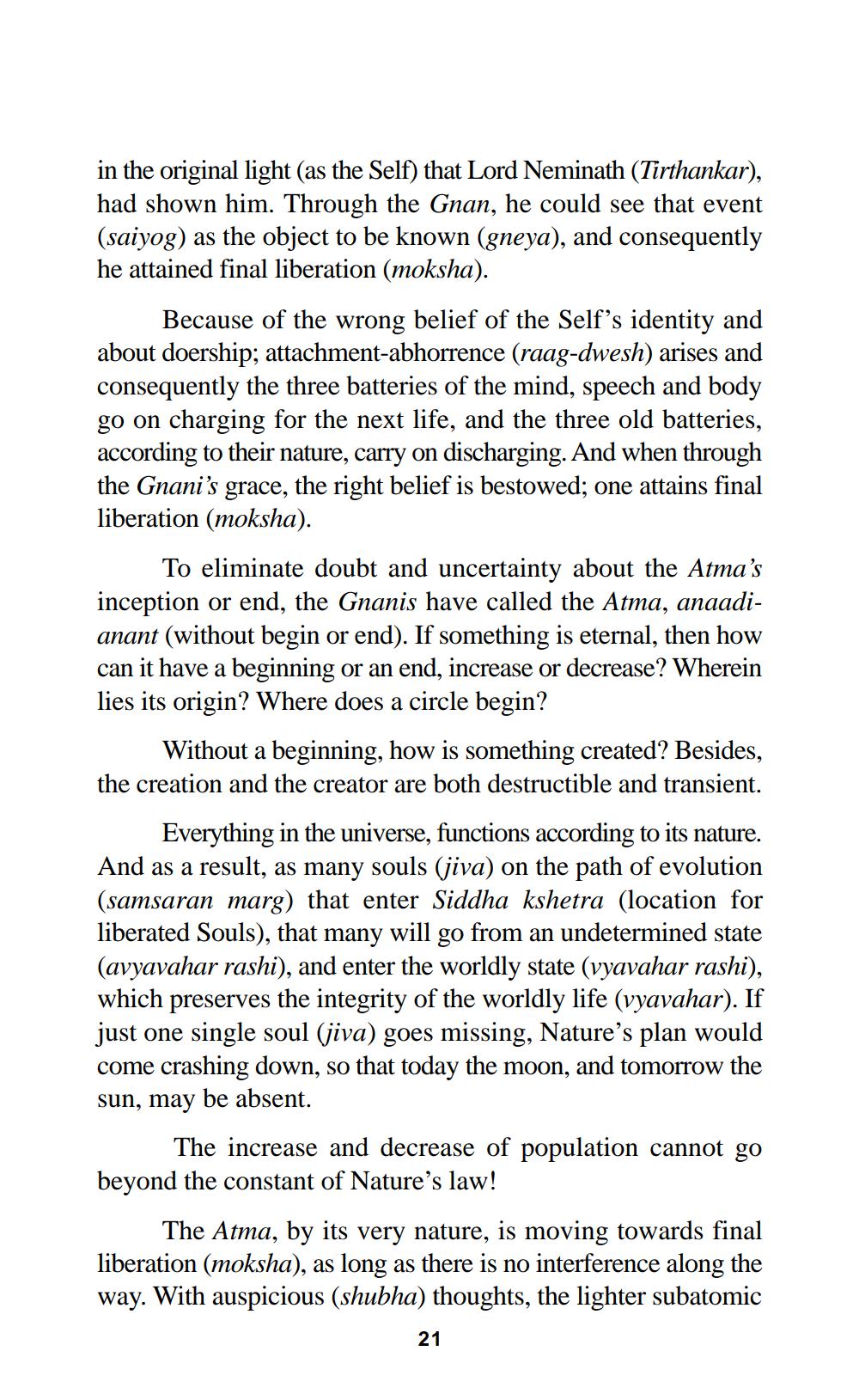________________
in the original light (as the Self) that Lord Neminath (Tirthankar), had shown him. Through the Gnan, he could see that event (saiyog) as the object to be known (gneya), and consequently he attained final liberation (moksha).
Because of the wrong belief of the Self's identity and about doership; attachment-abhorrence (raag-dwesh) arises and consequently the three batteries of the mind, speech and body go on charging for the next life, and the three old batteries, according to their nature, carry on discharging. And when through the Gnani's grace, the right belief is bestowed; one attains final liberation (moksha).
To eliminate doubt and uncertainty about the Atma's inception or end, the Gnanis have called the Atma, anaadianant (without begin or end). If something is eternal, then how can it have a beginning or an end, increase or decrease? Wherein lies its origin? Where does a circle begin?
Without a beginning, how is something created? Besides, the creation and the creator are both destructible and transient.
Everything in the universe, functions according to its nature. And as a result, as many souls (jiva) on the path of evolution (samsaran marg) that enter Siddha kshetra (location for liberated Souls), that many will go from an undetermined state (avyavahar rashi), and enter the worldly state (vyavahar rashi), which preserves the integrity of the worldly life (vyavahar). If just one single soul (jiva) goes missing, Nature's plan would come crashing down, so that today the moon, and tomorrow the sun, may be absent.
The increase and decrease of population cannot go beyond the constant of Nature's law!
The Atma, by its very nature, is moving towards final liberation (moksha), as long as there is no interference along the way. With auspicious (shubha) thoughts, the lighter subatomic
21




